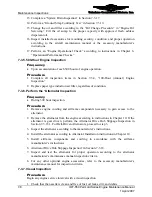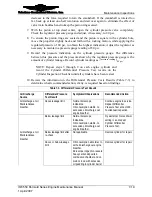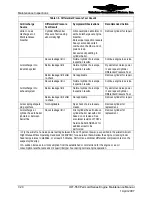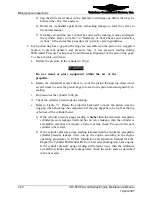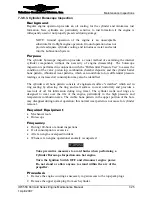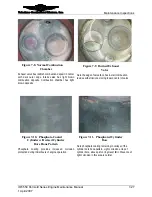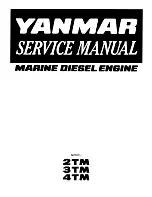
Maintenance Inspections
Teledyne Continental Motors, Inc.
TM
7-12
IOF-550 Permold Series Engine Maintenance Manual
1 April 2007
7-3.8.2. Differential Pressure Test
Purpose
The Cylinder Differential Pressure Test has become a widely used method of assisting in
determining the internal condition of cylinders and cylinder components. As with any test
or inspection, the Cylinder Differential Pressure Test has certain limitations that
necessitate its use in conjunction with other non-invasive inspections. TCM requires a
cylinder borescope inspection be accomplished in conjunction with the Differential
Pressure Test. (Refer to “Cylinder Borescope Inspection” in Section 7-3.8.3 for details).
Frequency
Perform the Cylinder Differential Pressure Test:
•
During 100-hour or annual inspections.
•
If excessive oil consumption or blow-by is suspected.
•
If the cylinder is showing signs of accelerated wear.
In addition to the Cylinder Differential Pressure Test and borescope inspection, further
inspection of any suspect cylinder is recommended in accordance with the guidelines set
forth in this chapter.
It is also important to monitor and record the engine’s oil consumption, the appearance or
color of the engine oil and any visual indications of high crankcase pressure (combustion
blow-by) such as an oily, wet area on the aircraft belly or lower wing surface.
NOTE: Prior to performing the Cylinder Differential Pressure Test,
determine the baseline master orifice calibrated pressure reading
according to Section 7-3.8.2.1 or 7-3.8.2.2.
The purpose of the Cylinder Differential Pressure Test is to identify leaks and the source
of leaks, with the engine under static conditions (not running), using a regulated pressure
source. When performing a Cylinder Differential Pressure Test a regulated test pressure
of eighty pounds per square inch (80 PSI) is directed into the cylinder with the piston at
top dead center at the end of the compression stroke and the beginning of the power
stroke. Eighty pounds per square inch (80 PSI) is used as a test pressure for safety
reasons and is significantly less than the combustion pressure of 800 to 1000 PSI created
during engine operation. Pistons, piston rings, valves and valve seats rely on combustion
forces to assist in creating a complete seal during engine operation.
NOTE: This static leak check does not relate directly to cylinder
pressures developed during actual engine operations.
Excess cylinder wall or piston ring wear, broken piston rings and burned valves will
normally exhibit additional symptoms that must be considered when determining cylinder
condition. These may include, but are not limited to the following:
•
Excessive cylinder barrel wear and/or piston ring wear:
•
Elevated crankcase pressure; refer to “Excessive Crankcase Pressure” in Chapter
8, Troubleshooting.
•
Increased oil consumption. (A sudden increase in oil consumption from the
established or normal trend for the engine or an oil consumption rate that exceeds
1/2 quart (@1/2 liter) per hour during normal engine operation).











